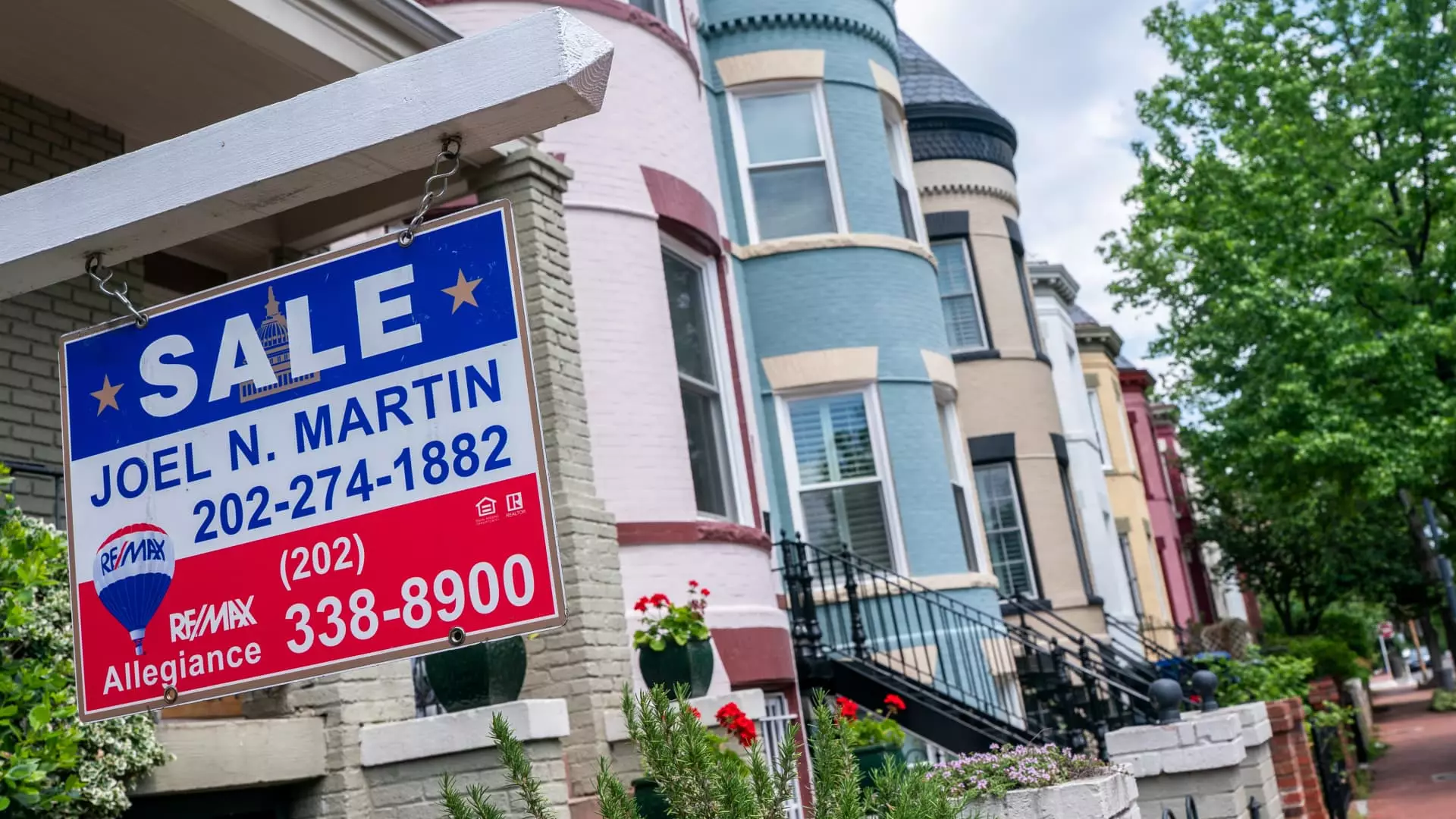The spring of 2023 marks an uneasy period for the housing market, weighed down by stubbornly high interest rates and an alarming decline in consumer confidence. According to recent figures from the National Association of Realtors, the sales of previously owned homes plunged by 0.5% from March to April, settling at an annualized rate of just 4 million units. This represents the slowest April pace since 2009, a year that many would prefer to forget. The data starkly contrasts with economists’ forecasts of a 2.7% increase; instead, we have witnessed a disappointing 2% drop compared to the same month last year. This trend sets the stage for an unsettling reality where our housing dreams evaporate under the weight of financial burden.
Lawrence Yun, the chief economist at the National Association of Realtors, paints a rather dismal picture, stating that home sales have stagnated at roughly 75% of pre-pandemic activity levels for the past three years. Even in the aftermath of seven million job additions to the economy, pent-up demand for housing remains unrealized. There’s a growing sense of frustration among prospective buyers as they observe potential opportunities slipping through their fingers, stymied by escalating mortgage rates. This doesn’t just reflect a sluggish market; it underscores a broader economic malaise.
The Conundrum of Inventory and Supply
Interestingly, while demand remains middling, the inventory of homes for sale has seen a notable uptick—rising by 9% month-over-month and nearly 21% compared to last April. The current stock of 1.45 million homes translates to a 4.4-month supply. This is the highest level in five years, yet it still falls short of the six-month threshold that experts deem necessary for a balanced market. Just one year ago, our supply stood at a mere 3.5 months. The abundance of available homes brings with it mixed signals; while it presents opportunities for buyers, it also portends a potential cooling of prices.
The median price for homes sold in April rested at $414,000, boasting a nominal year-over-year increase of 1.8%. While this establishes a new record for April, it’s crucial to recognize that this rate of appreciation has slowed significantly since July 2022. The South and West regions are particularly telling, where prices have reportedly slipped—an ominous sign for sellers and a breath of fresh air for beleaguered buyers. Yet, it’s essential to discern that we remain trapped in a mild seller’s market per Yun, creating an uneasy atmosphere where negotiating power is shifting but the sense of urgency remains palpable.
Demographics of Hope and Hesitation
Interestingly, first-time buyers have managed to maintain their footing, constituting 34% of sales—a figure largely unchanged from last year despite the prevailing difficulties. However, an alarming trend has emerged: cancellation rates surged to 7% in April, starkly up from a recent average hovering around 3% to 4%. This echoes a narrative of disillusionment; when consumers opt to retreat from the prospect of homeownership altogether, it signals deep-seated anxieties about future stability.
The luxury market is yet another tale entirely. Sales of homes priced over $1 million witnessed a nearly 6% increase from the previous year, while more modest homes priced between $100,000 and $250,000 experienced a rather sobering decline of just over 4%. Yet even the high-end market is feeling the strain of volatility, as Yun suggests the recent stock market turmoil has stifled growth there as well. In contrast, it creates a dramatic divide—a troubling clamor of prosperity juxtaposed against the desperation of lower-end buyers who are being effectively priced out.
The Road Ahead: A Perilous Path
In this tangled web of contradictory data, we find ourselves standing at a precipice. The higher inventory levels offer a glimmer of hope; they provide buyers with leverage and the possibility of better deals. Yet the larger implications are far more significant. The tug-of-war between rising mortgage rates and struggling consumer confidence may well lead us into a quagmire of stagnation. As each day passes without significant adjustments on the part of policymakers or market influencers, it becomes increasingly clear that we are not witnessing transformation but rather a laborious dance of discontent. The future of our housing market hinges precariously on the resolution of these pressing issues, and unless there is an earnest commitment to foster change, we risk descending further into an era marked by hesitation and uncertainty.

